Mazda CX-5 Vs Nissan Rogue: Which One Is Right For You?
Who wins the compact crossover battle?
The compact crossover segment is one of the busiest in the North American auto industry, with nearly every major automaker offering an attractive vehicle. This can cause some consumers to struggle with choosing the right one, but the level of competition also leads the automakers to constantly improve their vehicles. That leads to an entire segment of vehicles that are continuously evolving, leading to ever-better compact crossovers.
Get a Quote on a New Mazda CX-5 or Nissan RogueUnfortunately, the constant push for better compact crossovers doesn’t make the decision any easier for prospective buyers. For instance, the Mazda CX-5 and Nissan Rogue both offer many of the same features in a similarly-sized, similarly-priced package, so which is right for you? Below, we take a look at all of the areas in which the CX-5 outshines the Rogue.
Power Train & Driving Feel
The Mazda CX-5 is motivated by a naturally aspirated Skyactiv-G 2.5-litre four-cylinder engine that provides 187 horsepower and 186 lb-ft of torque. The Nissan Rogue is also powered by a naturally aspirated 2.5-litre four-cylinder engine, but with just 181 horsepower and 181 lb-ft of torque, it falls a little short of the standard CX-5 power plant. That extra horsepower and torque makes the Mazda quicker and more responsive in every driving situation. The power advantage also helps the CX-5 to tow up to 907kg, a significant margin over the Roque at just 612kg.
SEE ALSO: Mazda CX-5 vs Honda CR-VIn addition to the standard CX-5 engine offering more horsepower and torque than the only engine offered in the Nissan Roque, Mazda also offers a premium engine option. The Skyactiv-G 2.5 T engine with the Dynamic Pressure Turbo delivers up to 250 horsepower and up to 320 lb-ft of torque when using premium fuel, making this one of the most powerful vehicles in the segment.
The CX-5 sends power to the wheels by means of a traditional six-speed automatic transmission while the Nissan Rogue uses a Continuously Variable Transmission, or CVT. A CVT does not have gears, instead using a set of drums that change size to effectively alter the output ratio. As a result, the CVT does not shift but rather, the transmission is constantly adapting the ratios to keep the engine in the ideal range. Some drivers do not like this type of transmission, as it may feel like a traditional transmission when it is slipping. For those drivers who prefer the traditional shift feel of an automatic transmission, the CX-5 has the clear advantage. Best of all, the CX-5 is available with paddle shifters, allowing the driver to use the manual shift mode without taking their hands off of the steering wheel. This gives the CX-5 a premium feel while also making for an engaging driving experience.
The Mazda CX-5 also has the advantage of the G-Vectoring Control Plus system, which uses the throttle and the brakes to provide a smoother, more stable ride. When entering a turn, the system applies gradual braking force to the outside wheels, controlling weight transfer and stabilizing the vehicle. When the CX-5 exits that turn, the system applies different amounts of throttle to the different wheels, leading to a more stable feel during acceleration. In the long run, this system prevents the CX-5 from leaning side-to-side or front-to-back when going through turns.
On the road, the CX-5 sits lower to the ground and it is shorter overall, with a shorter wheelbase than the Rogue. As a result, it is easier to fit the Mazda in parking spaces and garages as well as feeling more nimble when driving in tight quarters. Best of all, the CX-5 is ultra-quiet, even at highway speeds, thanks in part to the noise isolating glass in the windshield and side windows. Nissan does not offer similar glass technology on the Rogue.
Finally, the CX-5 has a larger fuel tank in every configuration when compared to the Nissan Rogue, allowing Mazda drivers to go further between fill-ups.
Technology and Features
The CX-5 and Rogue both have standard infotainment systems with large touchscreens. An eight-inch-wide screen is standard on the CX-5 as is the case with the Nissan as well. But the Platinum trim does offer a nine-inch touchscreen. The Mazda on the other hand, also has the slick HMI Commander system, which allows the driver to control the infotainment system with a large knob and a few small buttons that are located in the center console. When the driver’s elbow is on the arm rest, their hand is situated right over this convenient control panel, so they don’t need to reach to the screen to change the radio station or volume. Hence, making the experience less distracting while driving.
SEE ALSO: Mazda CX-5 vs Toyota RAV4Both vehicles are available with heated front seats and available heated rear outboard seats.
One of the most impressive high tech features of the CX-5 is the Heads-Up Display. Once only available in expensive luxury machines, this technology provides the driver with key information right in their normal line of sight. This system projects an array of on-road information including vehicle speed, speed limit and turn-by-turn navigation instructions. It also shows the driver information pertaining to the Blind Spot Monitoring, Radar Cruise Control, Lane Keep Assist and Smart Brake Support systems. This is also available on the Rogue, but only on the highest AWD trim level.
The rain-sensing wipers, available on CX-5 but not on Rogue, further cut down the amount of work done by the driver, changing intermittent speed based on how hard the rain is falling.
Safety
Both the CX-5 and the Rogue offer a long list of advanced safety technology, with those standard features being included in the Mazda i-Activsense suite of driver assistance technology. Nissan and Mazda both include many features, including Blind Spot Monitoring, Radar Cruise Control, Lane Keep Assist and Smart Brake Support and a 360-degree camera, but the CX-5 does have one unique safety feature to make the road safer for everyone.
The Driver Attention Alert systems engages when the CX-5 has been on the road at highway speeds for more than 20 minutes. This system monitors the driver’s driving habits, including steering and throttle inputs relative to the vehicle’s location on the road. During a long drive, the system watches for changes in driving habits that are often associated with fatigue. When the system detects fatigue, or when the driver has been at the wheel for more than two-straight hours, the vehicle suggests that the driver stop for a break.
When driving in the harshest winter weather, the CX-5 also comes with a windshield wiper de-icer system that is not offered with the Rogue.
Interior and Cargo Space
The CX-5 and Rogue are both offered with an available moonroof, but in both forms, the Mazda has the advantage in rear headroom. The CX-5 also leads in rear legroom, not only are the rear seats more comfortable for taller rear passengers, but there is also more space for people getting in and out of the vehicle.
The new Rogue has brought some great improvements to its front seating area, but up front, the driver and passenger of the Mazda will enjoy more shoulder space than with the Rogue.
Styling
The Mazda CX-5 and Nissan Rogue have two completely different styling designs. The Rogue has a very modern, angular design with lots of lines dissecting the front end and two large grille areas flanked by smaller vents. The CX-5 features the Kodo design language, which focuses on simplicity. A large grille and the slim LED headlights dominate the front end, with lines that flow along the sides and over the hood. This front-to-rear flow creates a very elegant, upscale look, accentuated by the standard premium lighting system.
Pricing
The Mazda CX-5 has a slightly higher starting price in front-wheel-drive form as well as in premium trim, but for those looking to get into an all-wheel-drive SUV with the best value for the money, the CX-5 is a clear choice.
Verdict: Mazda CX-5 vs Nissan Rogue
If you are looking for a compact crossover that is fun to drive, with gobs of power and control of paddle shifters, the Mazda CX-5 is the clear choice over the Nissan Rogue. If you are less focused on fun-to-drive factor and more concerned with aspects like interior space, advanced safety features and premium technology, the CX-5 is still the better of these two vehicles. You may pay a little more for the Mazda, but you are paying a little to get more key features inside and out, including more power and stronger overall performance.
Patrick Rall has been covering the automotive industry for over a decade, but was born into car culture. Having grown up in his father's performance shop, he spent extensive time at the track, driving and wrenching on various types of vehicles.
More by Patrick Rall



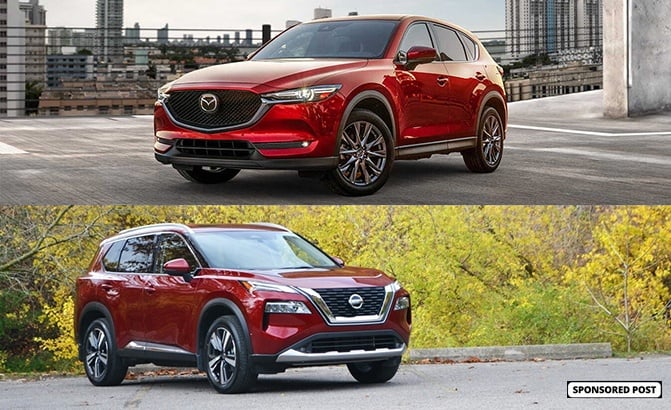
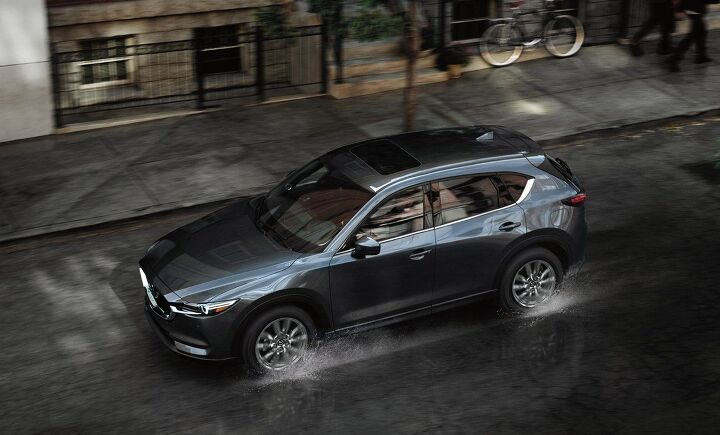






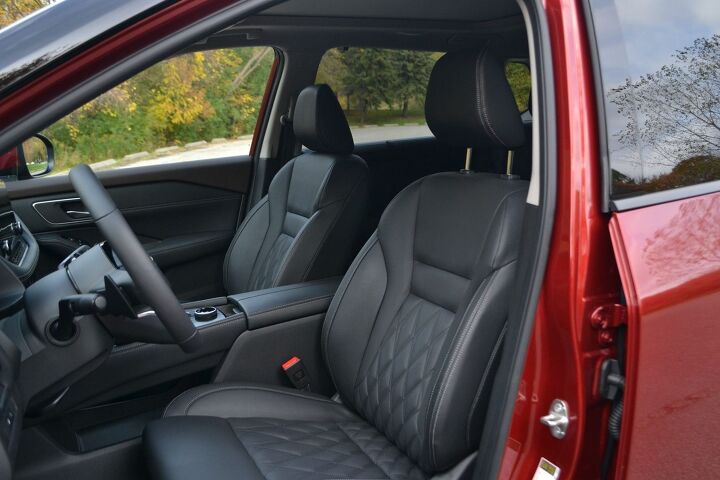

















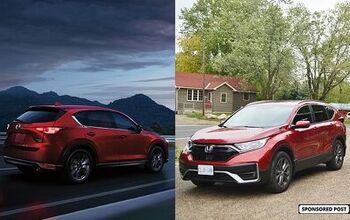

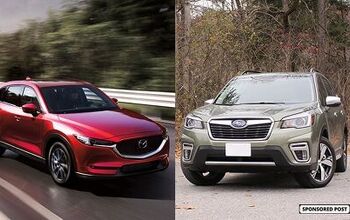
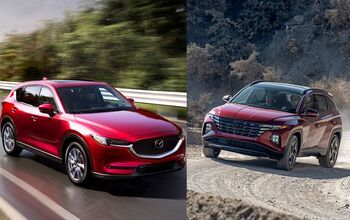












Comments
Join the conversation